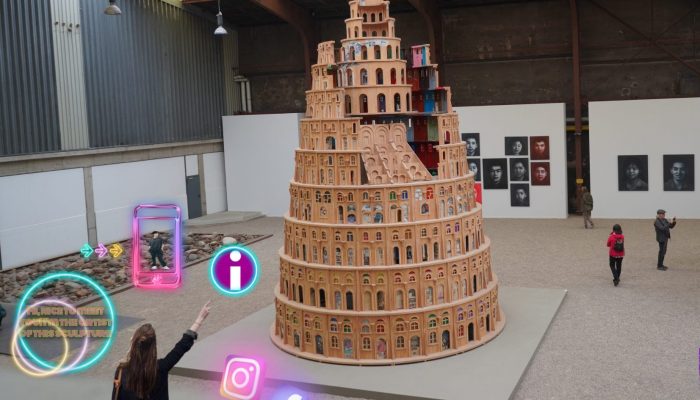Avatars, virtual scultures and more put art and culture in a new light
AR for museums of the future
Museum visits are no longer a given, not just since the outbreak of the Corona pandemic, but the current restrictions mean that exhibitions, like many other cultural industries, are struggling even more for their existence.
Cultural institutions lack extravagance and memorable events to reach younger audiences. Interactive museums have been on the fast track for years; visitors thirst for interactive art that they can touch, walk through and experience.
In an age where every move is shared on social platforms, young visitors want to generate exciting content and share it with their community. It is therefore no surprise that so-called "Instagram museums" such as the Wow Gallery Berlin or the Cologne Pop-up museum are extremely successful. This concept is strongly tailored to the social media platforms Instagram and TikTok, but cannot be applied to all forms and types of museums.
"Classic" museums, therefore, don't need a completely new concept, but an extension to expand and enhance the immersive experience.
A vision of the museum of the future
The year is 2025, and you are entering the grounds of the largest art exhibition in the north. At the entrance, you are pointed to a QR code that is intended to intensify the experience of the exhibition. There is also the option of borrowing a HoloLens for the exhibition, but you want to use your own smartphone and scan the QR code.
A web page opens that automatically switches to AR mode. You know this from earlier years, back then it was called Web AR. You remember well the first time you took a selfie with the mouse. Over the loaded page, which feels like an "old" app, an interactive 3D map is displayed with all the artworks on display and the matching artists. On your phone's display, you'll see various 3D objects that you can playfully move and reposition. They are signposts, information about your visit and hints about what there is to discover.
When you arrive in the first hall, you are particularly interested in a work of art and call up an avatar of the artist, who tells you something about it. Next to the avatar appears an information panel with details about the exhibit and the artist. You want to share the scene in front of you with your friends and decide to record a video. A story is automatically created. After that, you click on the Instagram icon in the video. Clicking it redirects you to the artist's Instagram profile and you tag him.
You continue walking through the exhibition and in the second hall there is a work of art by your favorite artist. You are eager to take a photo of yourself, the artwork and, of course, your favorite artist. To do this, you activate the avatar so that your companion can take a photo of you.
After an exciting day at the museum, you will still find the opportunity to take a virtual giveaway at the entrance. These are 3D objects of your favorite sculptures that you can easily place in your garden. Now you can even show your friends how great the museum is.
AR in the museum: future or reality?
In our vision, we describe a mix of what is technically feasible today and what is not too far off because major OEMs like Microsoft, Apple and Google are already working on it.
Web-AR
Today, it is possible to create accessible augmented reality very easily. Without markers and without an app, the content, i.e. the 3D model, is provided via web GL, so that the browsers on the mobile devices can take over the visualization directly.
Position holograms permanently
The fact that an avatar opens directly next to a work of art and can be viewed there by several visitors at the same time does not yet work holistically via Web XR, i.e. barrier-free.
The challenges lie primarily in synchronizing the data from device to device, in the size of the 3D models to be shown, and in the retrieval of the data by different users simultaneously. The only approach currently available here is to work app-based.
Are you ready?
Our Spacific philosophy: Augmented Reality for everyone!
With this corporate philosophy, we want to enable every company and every institution to expand and improve their business processes and offerings with augmented reality. Our guiding principle is: "More revenue and profit through Augmented Reality". We know that our Spacific Solution Platform provides the foundation for greater effectiveness and can be applied to virtually any industry.
XR SCENE visualizes at the touch of a button
We have created a platform solution that enables you to lead the way into the future of visualization. Use XR SCENE to visualize your products - with or without an app.
We want to make it as easy as possible for you and not have to do development work right away when you make changes. It's only 3 steps to your augmented reality solution:
- Upload content in the Spacific Self Service Portal
- Compile scenes and set up participants
- Visualize via mobile devices such as HoloLens, smartphone and tablet
Or make it even easier for yourself and simply generate your individual web AR page yourself.
Curious now?
You want to try XR Scene and discover its potential? Then feel free to contact us or simply test XR Scene now for free:


